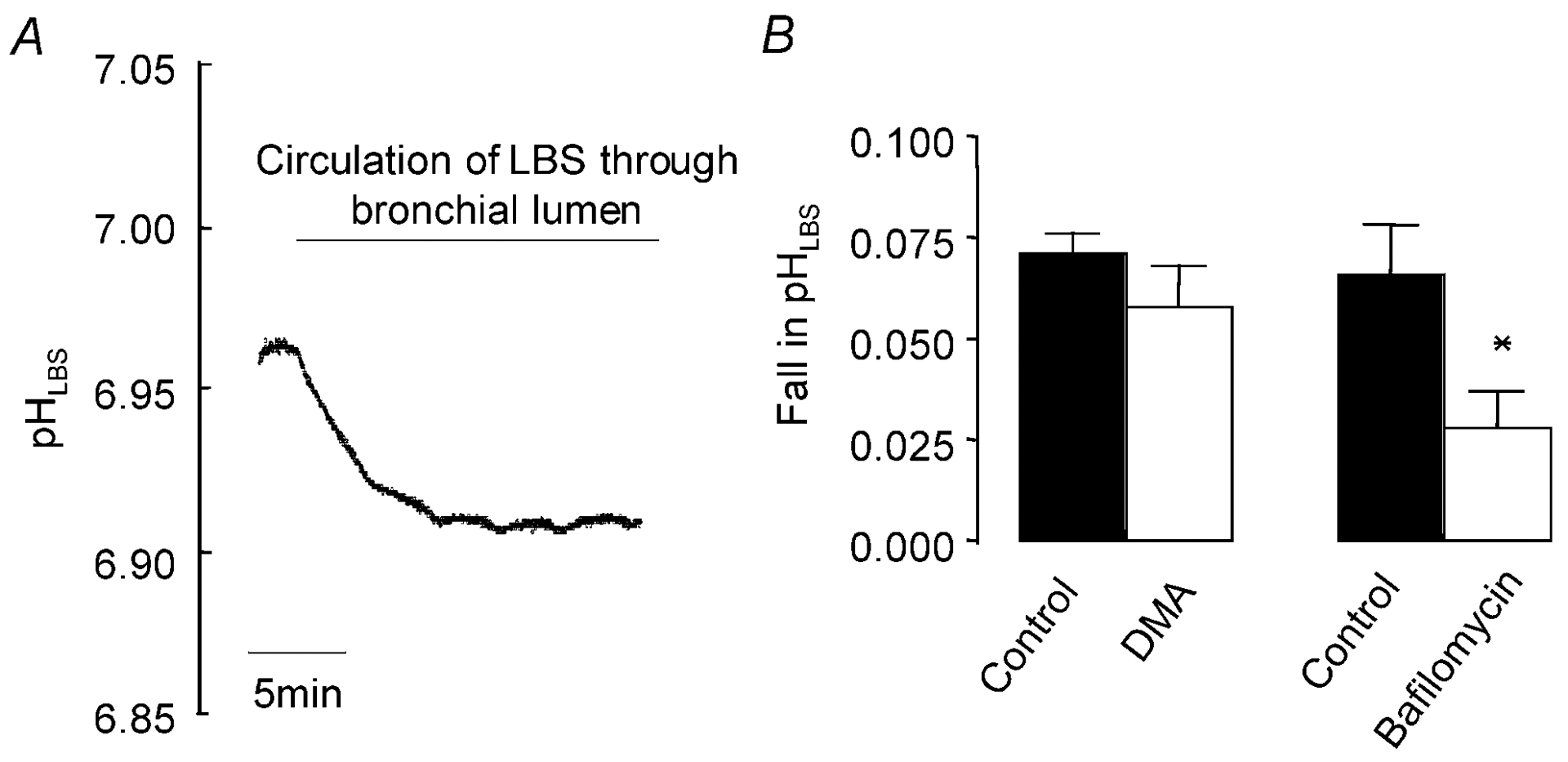Secretion of HCO3– by airway submucosal glands is essential for normal liquid and mucus secretion (Inglis et al. 1998). Since the liquid bathing the airway surface is fairly acidic, we have proposed that the surface epithelium may acidify HCO3–-rich glandular fluid. The aim of this study was to investigate the mechanisms by which intact distal airways acidify luminal fluid.
Distal bronchi were isolated from humanely killed pigs, cannulated in a bath containing HCO3– buffered solution and perfused (3 ml min-1) with similar solution, in which NaCl replaced NaHCO3–. This solution was lightly buffered (buffering capacity 0.6 mM (pH unit)-1) with KH2PO4 and NaOH to pH ~7, gassed with 100 % O2 to eliminate dissolved CO2 and stirred vigorously. The pH of this circulating luminal solution (10 ml) was monitored continuously. Upon perfusion through the airway lumen pH initially fell by 0.053 ± 0.005 pH units ([H+] increase 1.56 ± 0.19 µmol h-1; means ± S.E.M., n = 22) before stabilising (see Fig. 1). This acidification was unaffected by luminal dimethylamiloride (100 µM), a Na+/H+ exchange inhibitor, but was significantly inhibited (75.9 ± 13.3 %, n = 5, Student’s paired t test P < 0.05) by bafilomycin A1 (100 nM), a blocker of vH+-ATPase. Alkalinisation of the circulating solution by addition of NaOH induced further acidification, whose magnitude was dependent on the magnitude of the induced alkalinisation. Further analysis of these data using empirically determined buffering capacity of the circulating solution showed that the rate of secretion of acid equivalents was unaffected by the magnitude of alkalinisation. Fischer et al. (2002) recently showed that apical ATP significantly increased luminal acidification through proton conductances in cultured proximal airways. However, inclusion of ATP (100 µM) in the unbuffered luminal solution perfusing distal bronchi significantly reduced luminal acidification. After 20 min perfusion, the pH of control luminal buffer had fallen by 0.060 ± 0.008 units, whilst the pH of buffer containing ATP had acidified by only 0.023 ± 0.016 units (n = 10, P < 0.05).
These data suggest that intact distal bronchi acidify their lumen through activity of vH+-ATPase. This acidification can be induced by alkalinisation of the lumen, and is not stimulated by luminal ATP.
This work was supported by the Wellcome and Tenovus Trusts.

